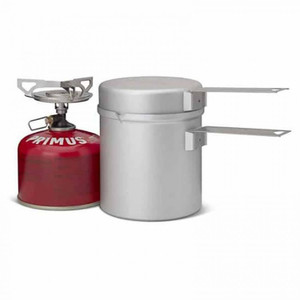Sale

FREE SHIPPING ON ORDERS OVER $149 WITHIN NEW ZEALAND
Hiking stoves are compact, portable cooking devices designed for use in the outdoors—primarily for boiling water, cooking meals, or making hot drinks during hikes, treks, and backpacking trips. They're lightweight, efficient, and built to function in varying weather conditions.
Types of Hiking Stoves:
1. Canister Stoves (Gas Stoves)
Use pre-pressurized fuel canisters (typically isobutane/propane mix)
Screw directly onto the canister or use a hose with a remote burner
Pros:
Lightweight and easy to use
Fast boiling times
Great flame control (simmering to boiling)
Cons:
Less efficient in cold or high-altitude conditions
Empty canisters can’t be refilled or recycled everywhere
Best for: Most hikers and backpackers in 3-season conditions
2. Liquid Fuel Stoves
Use refillable fuel bottles (white gas, kerosene, diesel, etc.)
Require priming before use
Pros:
Work well in cold and high-altitude environments
Fuel is cheaper and widely available
Refillable and eco-friendly
Cons:
Heavier and more complex to operate
Requires maintenance (cleaning and rebuilding)
Best for: Long-distance or international trekking, mountaineering
3. Alcohol Stoves
Burn denatured alcohol in a simple metal or DIY container
Pros:
Ultralight and silent
Fuel is cheap and easy to find
No moving parts = fewer breakdowns
Cons:
Slow boiling times
Less effective in wind and cold
Best for: Ultralight backpackers and minimalist hikers
How to Choose a Hiking Stove:
|
Priority |
Best Option |
|---|---|
|
Lightweight & easy use |
Canister stove |
|
Cold-weather performance |
Liquid fuel stove |
|
Budget & simplicity |
Alcohol stove |
Summary:
A hiking stove is an essential tool for cooking and boiling water in the backcountry. Choosing the right one depends on:
Trip length
Weather conditions
Fuel availability
Your cooking style (boiling only vs. real meals)
Want help picking a model for a specific trek or comparing popular options (like Jetboil vs MSR)?